Rennie Scaysbrook | August 19, 2022
An icon from another time inspires the generation of today. No, we’re not talking about Steve Jobs; we’re talking about the Kawasaki Z1 and the fantastic 2022 Kawasaki Z900RS SE.
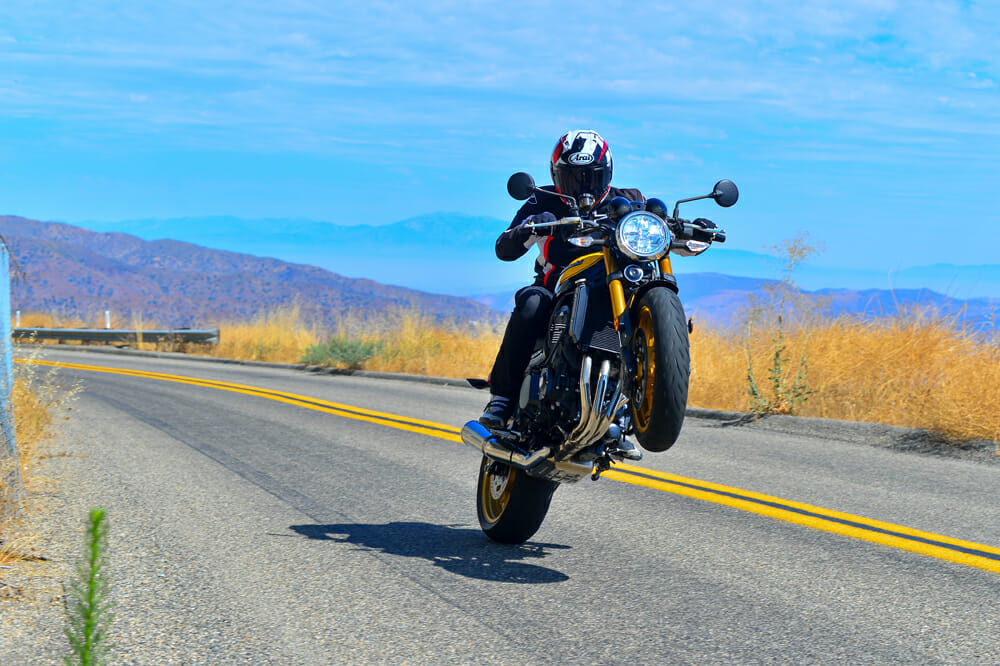 Just because it’s a retro doesn’t mean it can’t get it up.
Just because it’s a retro doesn’t mean it can’t get it up.
Photography by Kit Palmer
Few motorcycles have left their mark on the subculture like the Kawasaki Z1. Not quite the original Japanese four-cylinder (that honor goes to the 1969 Honda CB750), the Z1 could quite easily be labeled the first Japanese superbike, the machine that put us on the path we’re on today with over 200 horsepower four-pot screamers.
The Z1 is one of those machines that transcended the scene, gaining a level of pop culture status generally reserved for contraptions like a Ford Mustang. Kawasaki knocked it so far out of the park, both in timing and execution, with the Z1 that they’ve been trying to get back to that level ever since and never quite making it.
The Z1 may have been created 50-odd years ago, but as they say, a classic never goes out of style. So, in 2017, the board of directors at Kawasaki Heavy Industries in Japan decided to create a Z1 for the modern era. Using the Z900 as its base, the Z900RS channeled the lines and style of the original, but with most of the mod-cons, you’d hope for like fuel injection, modern suspension and decent brakes.
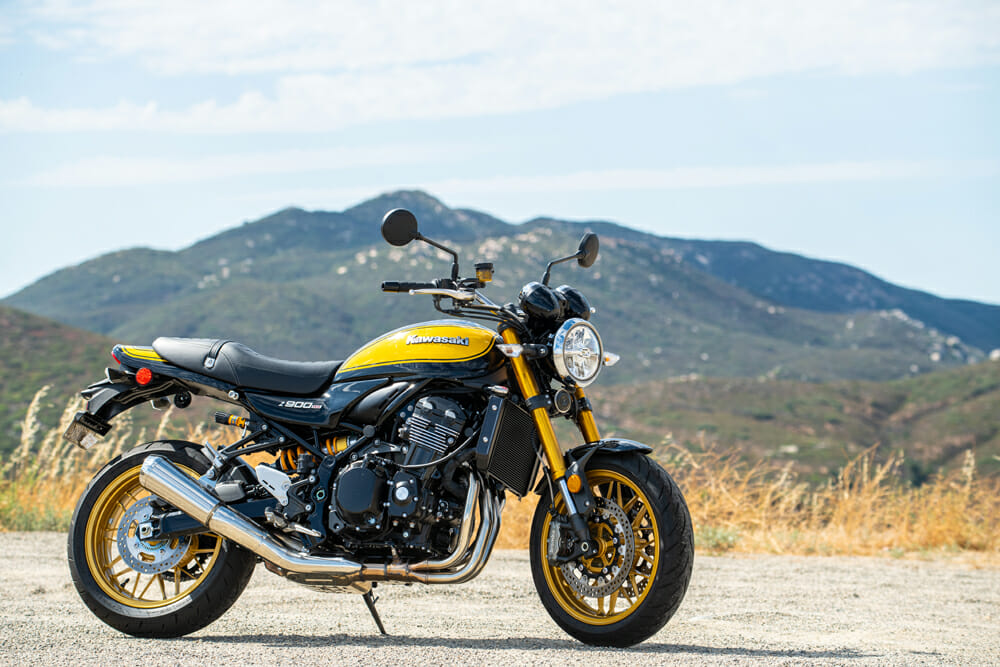 Classic style, an easy ride position, plenty of grunt, and that beautiful Yellow Ball color scheme. What’s not to love?
Classic style, an easy ride position, plenty of grunt, and that beautiful Yellow Ball color scheme. What’s not to love?
I spent most of 2018 with a Z900RS, and it was a year of delightfully fond memories. I absolutely adored that bike, except for the wretched throttle response I complained about constantly due to the emissions strangling.
We threw some choice parts at our Project Z900RS, like gorgeous gold forged aluminum Dymag wheels, some Yoshimura bits and bobs like a fender eliminator, Dunlop Q3s, and a pretty Akrapovic titanium muffler for a bit more bark. It was a gem of a bike.
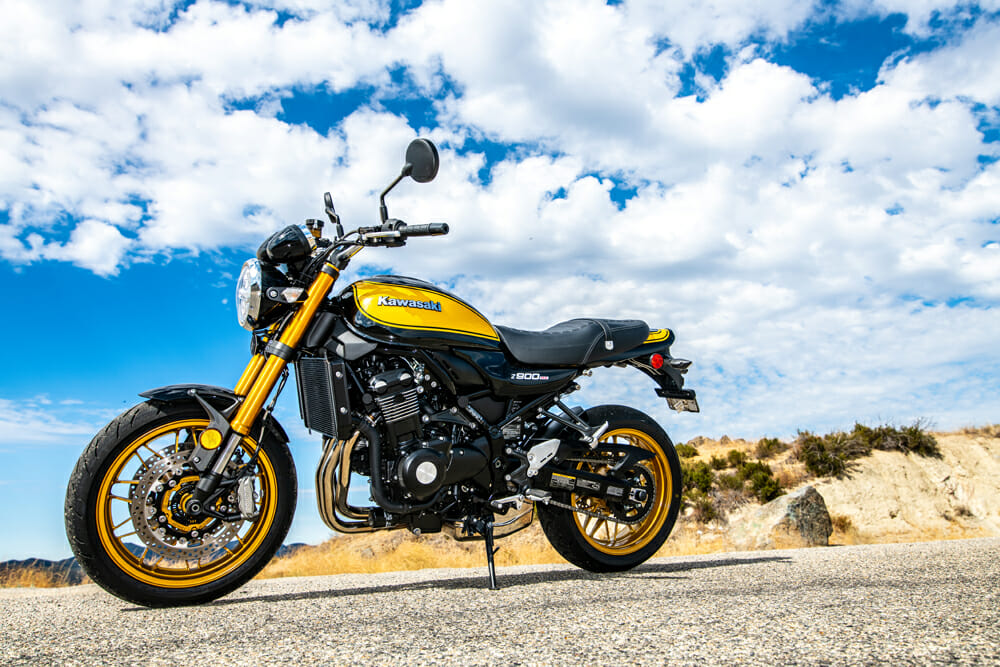
Fast forward to 2022, and I have just spent a month reacquainting myself with the Z900RS in its new, $13,449 SE form. This year, Kawasaki is celebrating its 50th anniversary. and, as such, created a separate model to mark the occasion, but the good folk at Kawasaki USA gave me the SE model that comes with the beautiful “Yellow Ball” paint scheme, gold wheels (they must have noticed Project Z900RS), gold forks, Brembo 4.32 monobloc four-piston brakes and an Ӧhlins S46 monoshock that comes directly off the sportier Z900 SE.
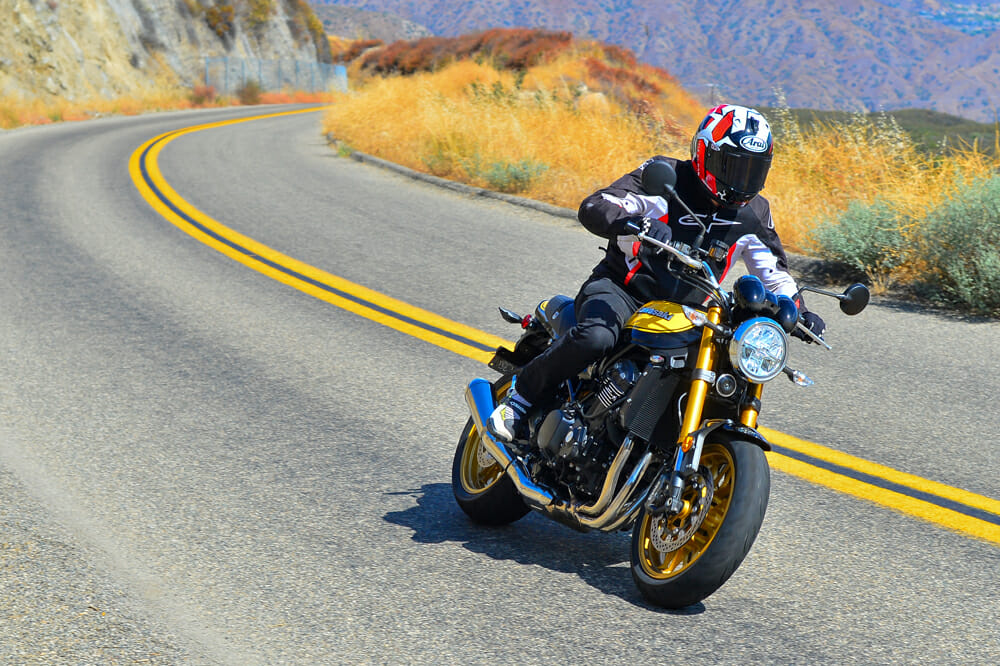 Bolt upright riding position means long days in the saddle are easily catered for.
Bolt upright riding position means long days in the saddle are easily catered for.
The motor remains largely unchanged from 2018 except for one thing—the throttle response now no longer feels like you’re firing a tommy gun. This was a point I raised with Kawasaki when chatting about the new bike, repeatedly asking what had changed to make this fact so, but all I was met with was a shrug of the shoulders and a wink. Kawasaki has doubtless changed something within the mapping to smooth out the initial throttle response because, going over my old press kits, Kawasaki has simply copied and pasted the 2018 engine description for 2022. Hmm.
Whatever Kawasaki has done, it has made the ride much more enjoyable at low speeds. Throttle openings at low rpm from fully closed—for the most part—are no longer met with a jolt at the twist grip. It’s impossible nowadays to get that old-school, creamy smooth throttle response a set of perfectly balanced carburetors will give you, thanks to the various emissions hoops companies like Kawasaki need to deal with, but the 2022 iteration is a marked improvement over the original 2018 model in this regard.
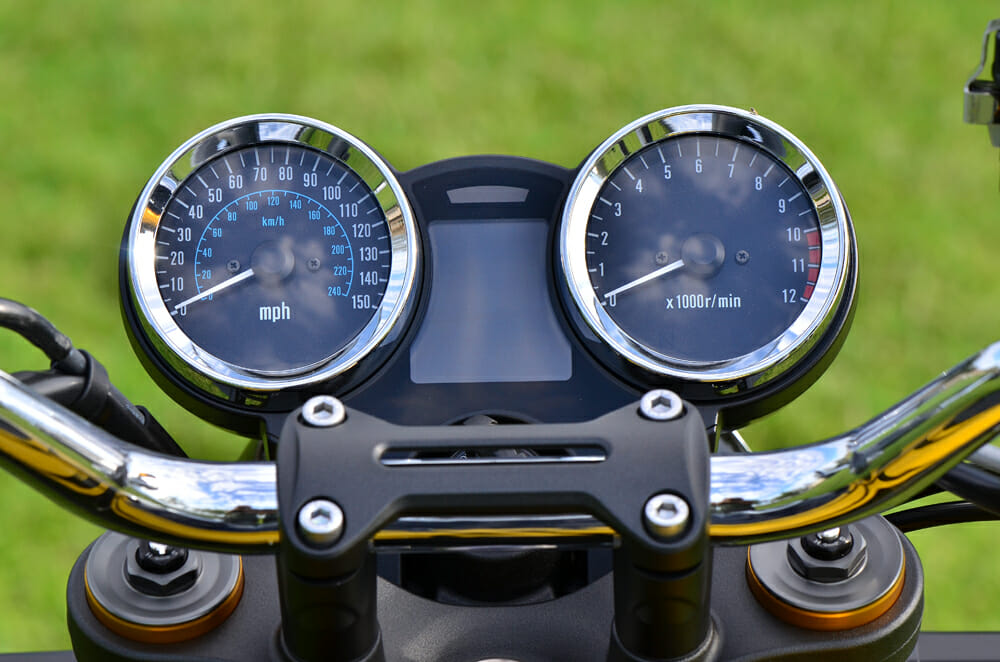 Classic analog clocks flank a digital cluster for the basics like fuel range and trip info.
Classic analog clocks flank a digital cluster for the basics like fuel range and trip info.
If you’ve ever ridden a Z900 (we have), you’ll know this is a motor that likes to rev in the traditional Kawasaki four-cylinder sense. That green meanie doesn’t get going until you’re at least at 4000 rpm, but the same motor in the Z900RS SE guise has already picked up the pace by that point. Shorter duration intake and exhaust cam profiles help here, and combined with the 12 percent heavier flywheel, the Z900RS SE produces more torque and pulls harder than the Z900SE does up to 7000 rpm in a more linear fashion.
The Z900RS SE doesn’t impart that feeling of urgency that the sportier Z900SE does. Instead, it prefers to ride along at a medium speed, using all that torque in third, fourth, or fifth gear to float from corner to corner without having to constantly dance on the shift lever. It’s more relaxed, and that’s a good thing.
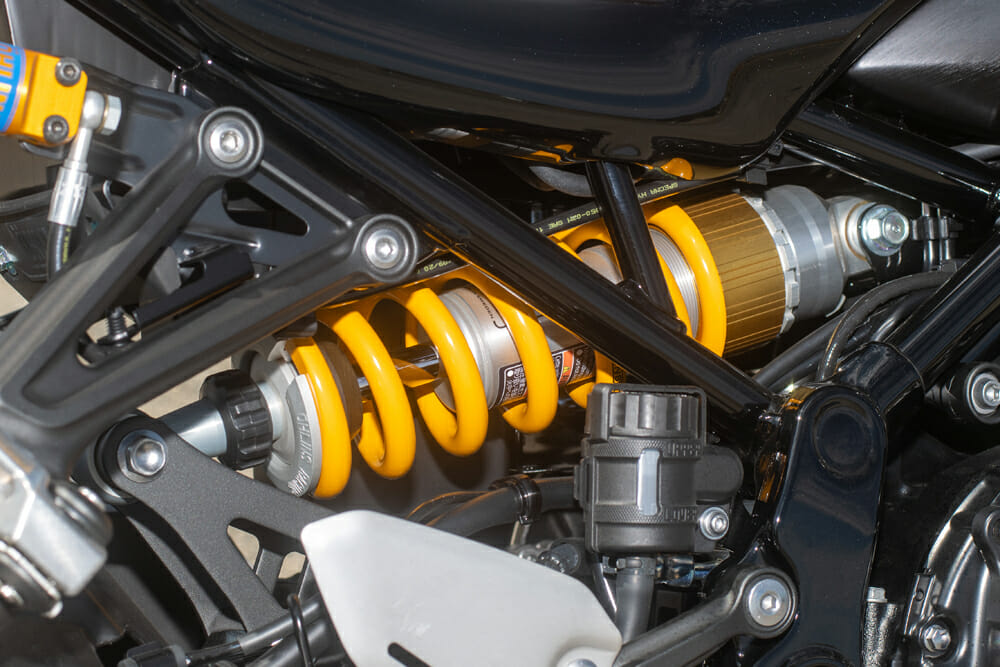 A large part of what makes this model an SE is that Ӧhlins S46 shock.
A large part of what makes this model an SE is that Ӧhlins S46 shock.
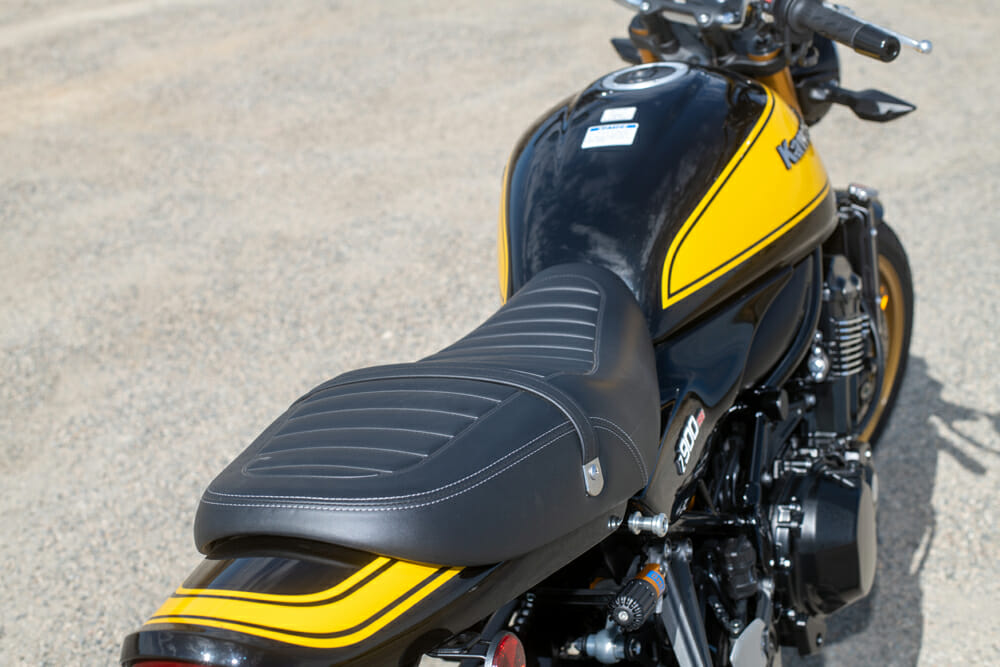 The massive single-piece bench seat is ultra-comfortable.
The massive single-piece bench seat is ultra-comfortable.
However, it’s not perfect. Considering we live in the modern age, I would have loved Kawasaki to have fitted the quickshifter that is also missing from the Z900SE. The gearshift is a little on the agricultural side, and although no miss-shifts were encountered, it’s a heavier shift than I’d have liked. I can live without the cruise control (although that would be nice, too), but I feel a quickshift should come standard with any model with SE after its name.
That is the only downside to the Kawasaki’s engine and gearbox equation, and the rest of the machine is superb. The ride quality offered by that Ӧhlins S46 is a marked impprovement over what I remember from 2018 (the front is unchanged except for the gold coating on the fork), and the Brembo brakes offer decent bite and performance. They could be a little better, as the ABS will kick in too early for my liking under heavy braking, but overall, the braking performance is good.
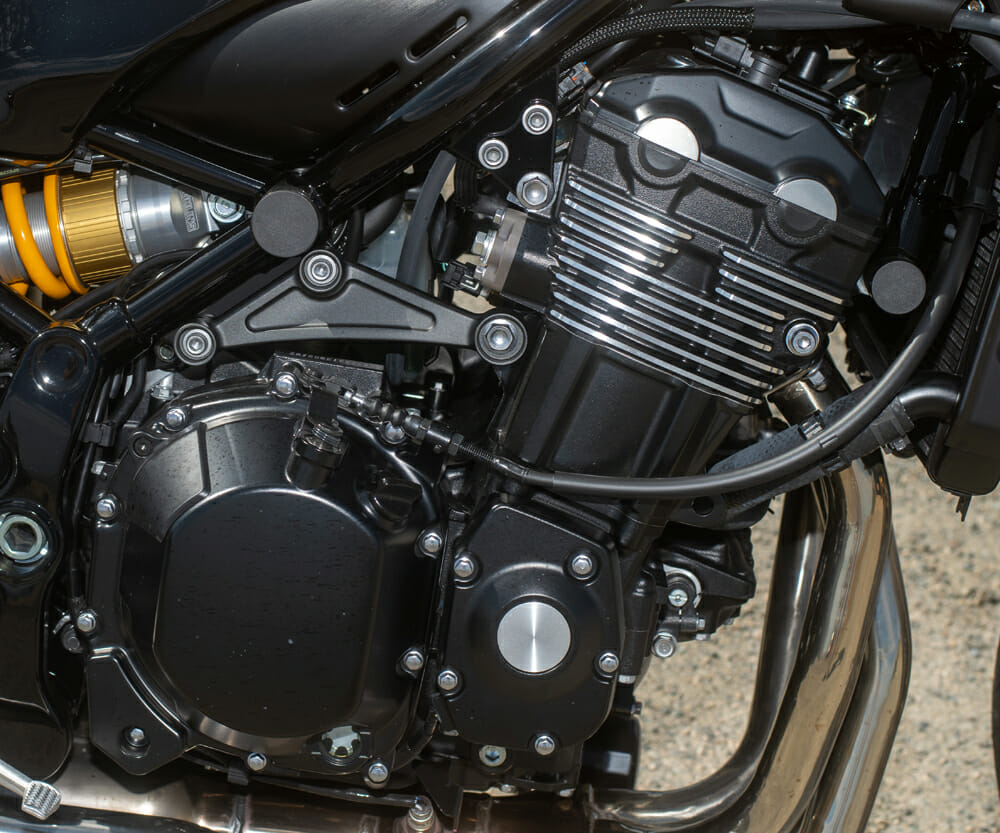 A myriad of changes to the Z900SE-derived motor include a finned cylinder head to mimic the original air-cooled Z1.
A myriad of changes to the Z900SE-derived motor include a finned cylinder head to mimic the original air-cooled Z1.
Perhaps the best thing I love about the Z900RS SE is the ergonomics. This is a properly old-school 50/50 front-to-rear riding position with next to no weight on your wrists, so you can ride further for longer without getting sore.
Compared to the sporty 900, the handlebar is 65mm higher and 35mm closer to the rider, and the rubber-mounted footpegs are 20mm lower and 20mm further forward. Comfort is the name of the game here, with the package topped off by that 1970s-style bench seat that wouldn’t look out of place in a ’69 El Camino SS.
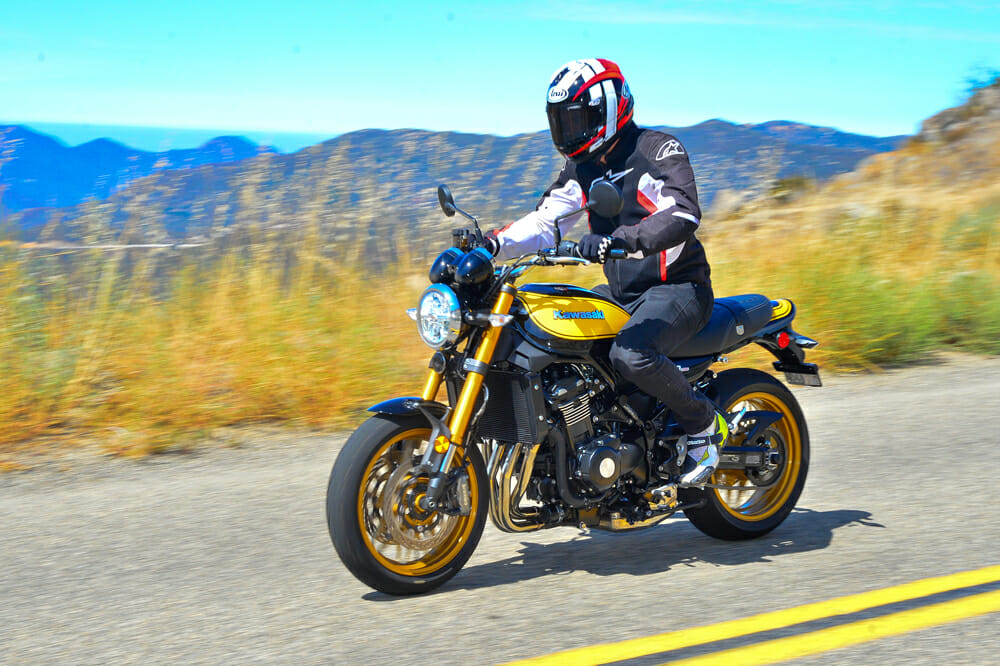 Sportbiking as it used to be.
Sportbiking as it used to be.
More than anything, the Z900RS SE emits the kind of style I absolutely love. It is (in my opinion) the best of the throw-back style machines on offer from today’s manufacturers, and there’s some good competition in that category from the likes of Triumph, BMW, and, to a degree, Yamaha—although I will argue I think the splendid XSR900 is more modern than retro.
It’s not perfect; no bike is. However, I don’t think I could find anyone who will go for a ride on a Z900RS SE and not at least like it, if not love it. It’s that kinda bike. CN
VIDEO | 2022 Kawasaki Z900RS SE Review
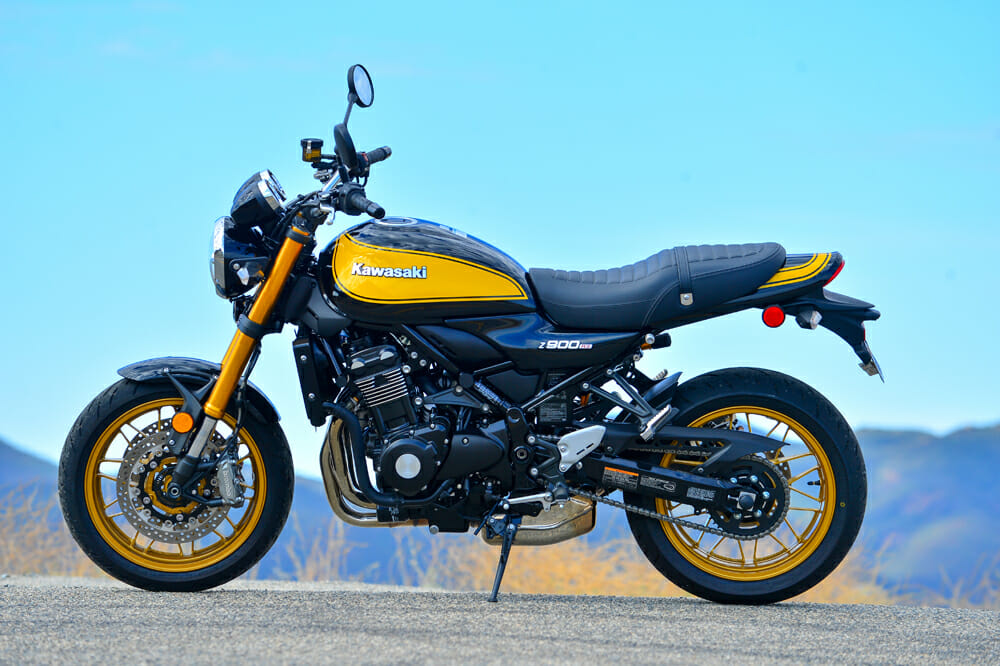
2022 Kawasaki Z900RS SE Specifications
| MSRP: |
$13,449 |
| Engine: |
Inline 4-cylinder |
| Valvetrain: |
DOHC, 16-valve |
| Cooling system: |
Liquid |
| Displacement: |
948cc |
| Bore x stroke: |
73.4 x 56mm |
| Compression ratio: |
10.8:1 |
| Clutch: |
Wet multi-plate |
| Transmission: |
Six-speed |
| Chassis: |
Tubular steel trellis frame |
| Front suspension: |
Inverted fork with adjustable compression and rebound damping, and spring preload |
| Rear suspension: |
Horizontal back-link Ӧhlins S46 swingarm with stepless adjustable rebound damping and spring preload adjustment |
| Front-wheel travel: |
4.7 in. |
| Rear-wheel travel: |
5.5 in. |
| Front brake: |
300mm dual semi-floating discs, radially mounted Brembo dual monobloc 4-piston calipers, ABS as standard |
| Rear brake: |
250mm disc, single-piston caliper with ABS as standard |
| Front tire |
120/70 ZR17 Dunlop GPR-300F |
| Rear tire: |
180/55 ZR17 Dunlop GPR-300 |
| Rake: |
25.4° |
| Wheelbase: |
58.1 in. |
| Seat height: |
31.5 in. |
| Fuel capacity: |
4.5 gal. |
| Weight (curb, claimed): |
471.9 lbs. |
| Color: |
Yellow Ball |